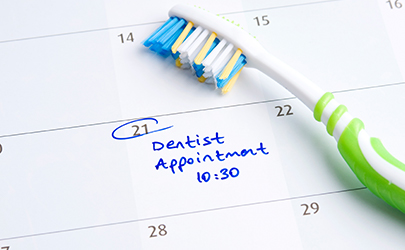The Importance of Oral Hygiene for Children
Teeth are an integral part of overall health and with proper care, many people can keep their teeth for a lifetime. Good oral health should begin early – even before a child’s first teeth erupt. Baby teeth generally start to peek through the gums at six months of age.
Besides allowing a child to eat and speak, baby teeth “hold the space” for adult teeth that will develop later. Parents play an important role in caring for their children’s mouths and helping them develop good oral cleaning habits. The first visit to the dental hygienist is recommended before the child turns one, and then regular visits should be scheduled.
Cavities are very common in North American children. Untreated cavities can cause pain and infections that may lead to problems with eating, speaking, playing, and learning.
When should I start flossing my child's teeth?
You should floss even your child’s baby (or primary teeth). Once your child’s teeth start to fit closely together, usually between the ages of two and six, flossing is an important part of their oral health.
When can children floss their teeth by themselves?
Until your child can floss their teeth on their own, you should help them floss to get them in the habit of flossing daily. Children are usually able to floss by themselves around the age of 10.
How can I help them learn to floss?
To stress the importance of flossing, and help them develop a good habit of flossing, do it for them regularly until they're able to do it themselves. You want to establish the healthy habit of daily flossing early so that when their permanent teeth come in, they already have flossing worked into their daily routine.
Use floss that is soft and flexible so that it doesn't hurt their teeth and is comfortable on their gums.
Flossing is so very important in maintaining healthy gums and teeth, and it is better to start early than late.
How to get your child to be enthusiastic about flossing
To get your child excited about the idea of flossing, set up a simple game or activity to both provide entertainment and an understanding of the importance of flossing. One suggestion would be a peanut butter flossing activity. Put on a rubber glove and allow your child to spread peanut butter between your fingers. Explain how this resembles plaque and food getting stuck in between our teeth when we don’t floss and allow plaque to build up. Then, giving your child a piece of floss, instruct him/her to try and scrape off all of the peanut butter.
This activity, or something similar, can be a great way to entice your child into trying to floss more often.



